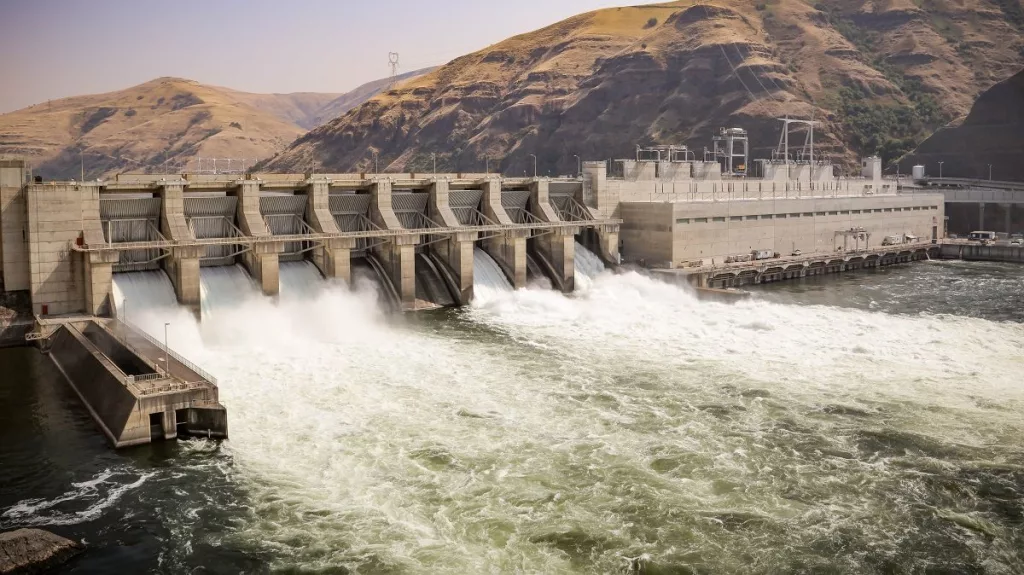COLFAX, WA – For three decades, politics in the 5th Congressional District have been shaped by the many “what if” questions about removing four dams on the Lower Snake River. The Washington State Department of Transportation is the latest agency to jump into the Lower Snake River dam breaching debate at a time when federal agencies are getting out of the water.
The administration of President Donald Trump recently took action to halt efforts that could have led to the breaching of the lower Snake River dams in southeastern Washington.
A June 12 Executive Order signed by President Trump directed all affected federal agencies to withdraw from a Memorandum of Understanding filed on Dec. 14, 2023, in the Columbia River System litigation, National Wildlife Federation v. National Marine Fisheries Service.
The Trump administration justified this by prioritizing energy reliability and cost, stating that the previous policy focused too much on climate change and fish populations at the expense of national energy needs.
The Lower Snake River Dams Transportation Study, initiated by the Washington State Legislature, aims to analyze how transportation systems – including highways, roads, freight and rail infrastructure – would change if the four lower Snake River dams were removed
The Legislature included the WSDOT study in the 2025-27 transportation budget.
Six scenarios were displayed for public comment at a Monday open house in Colfax at the Whitman County Library. Based on stakeholder input, WSDOT may develop additional scenarios.
Photo by Sue Lani Madsen
The U.S. Army Corps of Engineers owns and operates the four lower Snake River dams: Ice Harbor, Lower Monumental, Little Goose and Lower Granite. These dams provide recreation opportunities, green baseload energy, irrigation, flood control and transportation.
Colfax is located in the vicinity of the Lower Snake River Dams and is directly impacted by the potential consequences of breaching, especially with regard to agriculture and transportation.
For agriculture, the primary concern to be addressed by the WSDOT study is the loss of barges as a competitive option for moving grain into the export market.
Rep. Joe Schmick, R-Colfax, recalled an experience as a farmer when he served on the Washington Barley Commission in the 1990s.
“We took a tour up in northern Montana where freight prices doubled after the rail service pulled out, because then there was only one show in town, and that was truck,” he explained. “For the growers, that is always nagging at the back of my mind. Once you have a captive market, freight prices will go up. Having both rail and barge keeps everyone in check.”
Several attendees at the open house were disappointed at the lack of detail on the cost of implementing the changes, especially the cost of upgrading existing local roads to handle trucks.
Whitman County Commissioner Art Swannack and others pointed out that some roads proposed to handle increasing truck traffic if the dams are breached are gravel or lack substructure for heavy loads.
Scenarios include both trucking and rail shipment as alternatives to barges.
Jim Mahugh, an engineer with WSDOT, said secondary impacts are not included in the transportation study.
“Take the barges out, and all costs go up,” he said.
According to Army Corps of Engineers data, it would require 1.4 unit trains of one hundred cars each, or 53 trucks, to replace one four-barge tow to ship 490,000 bushels of grain.
Dan Hart, general manager of Almota Elevator Co., a grain handling and storage organization in Colfax, described the scenarios as simplistic.
“There are truck and driver shortages now,” he said. “Where are all these trucks and drivers supposed to come from?”
Shipping costs for alternatives to barges are based on typical diesel truck load capacity rather than the reduced payloads under current electric vehicle truck technology.
Mahugh said the process is in Phase 2 of developing the scenarios and has not yet addressed costs.
“We are not at that point in the study now,” he explained.
Cost impacts include investment in new and existing infrastructure for roads and short-line rail operations.
When asked about energy, flood control and recreation impacts, Mahugh described himself as “just a road and rail guy.”
He said the state Recreation and Conservation Office is studying the recreation impacts of dam breaching, including the impact of canceling the inland cruises currently plying the Snake River to the Port of Lewiston. He was uncertain which office was studying irrigation and power impacts.
The project website to submit comments and receive updates on the study can be found at: https://wsdot.wa.gov/construction-planning/search-studies/lower-snake-river-dams-transportation-study.
